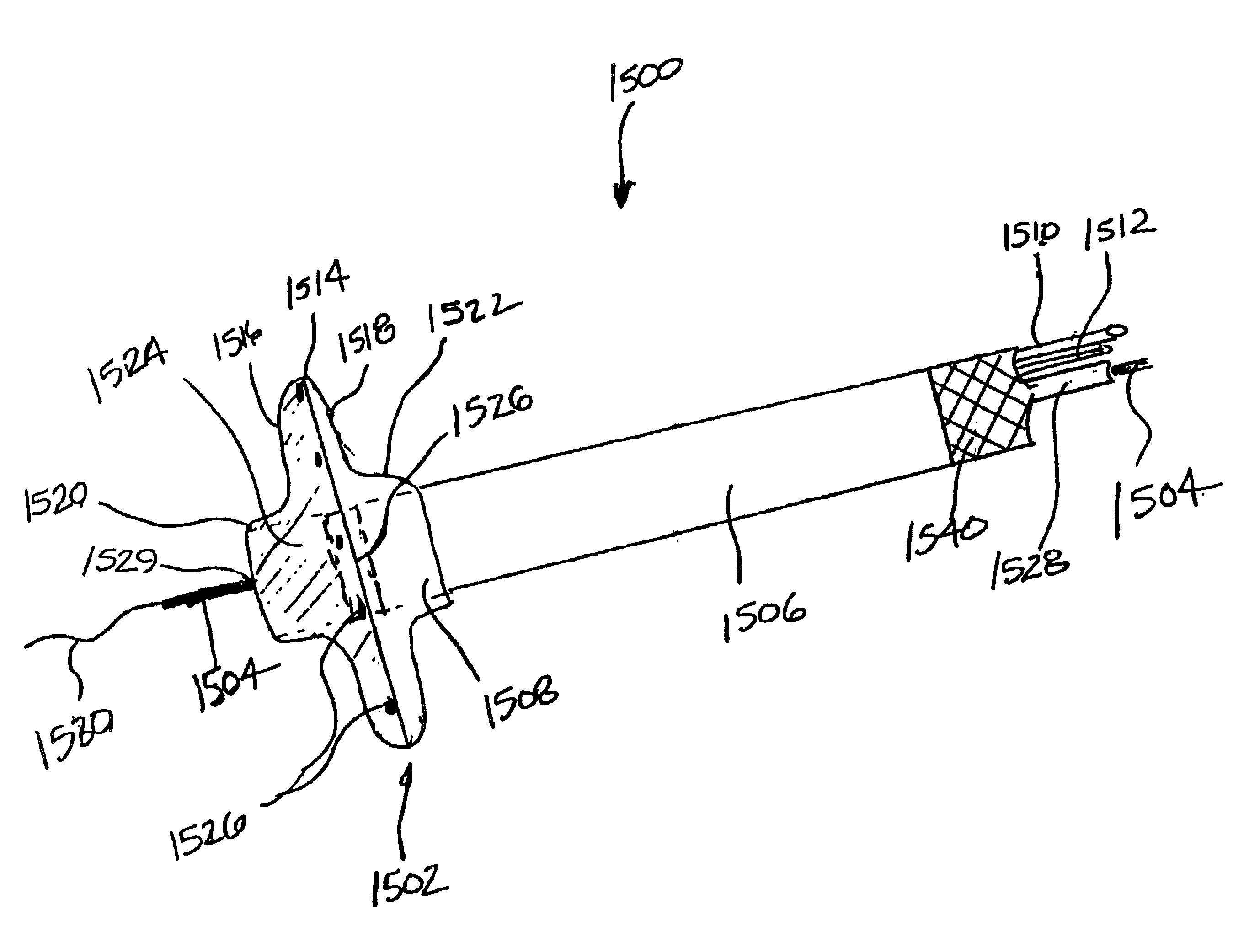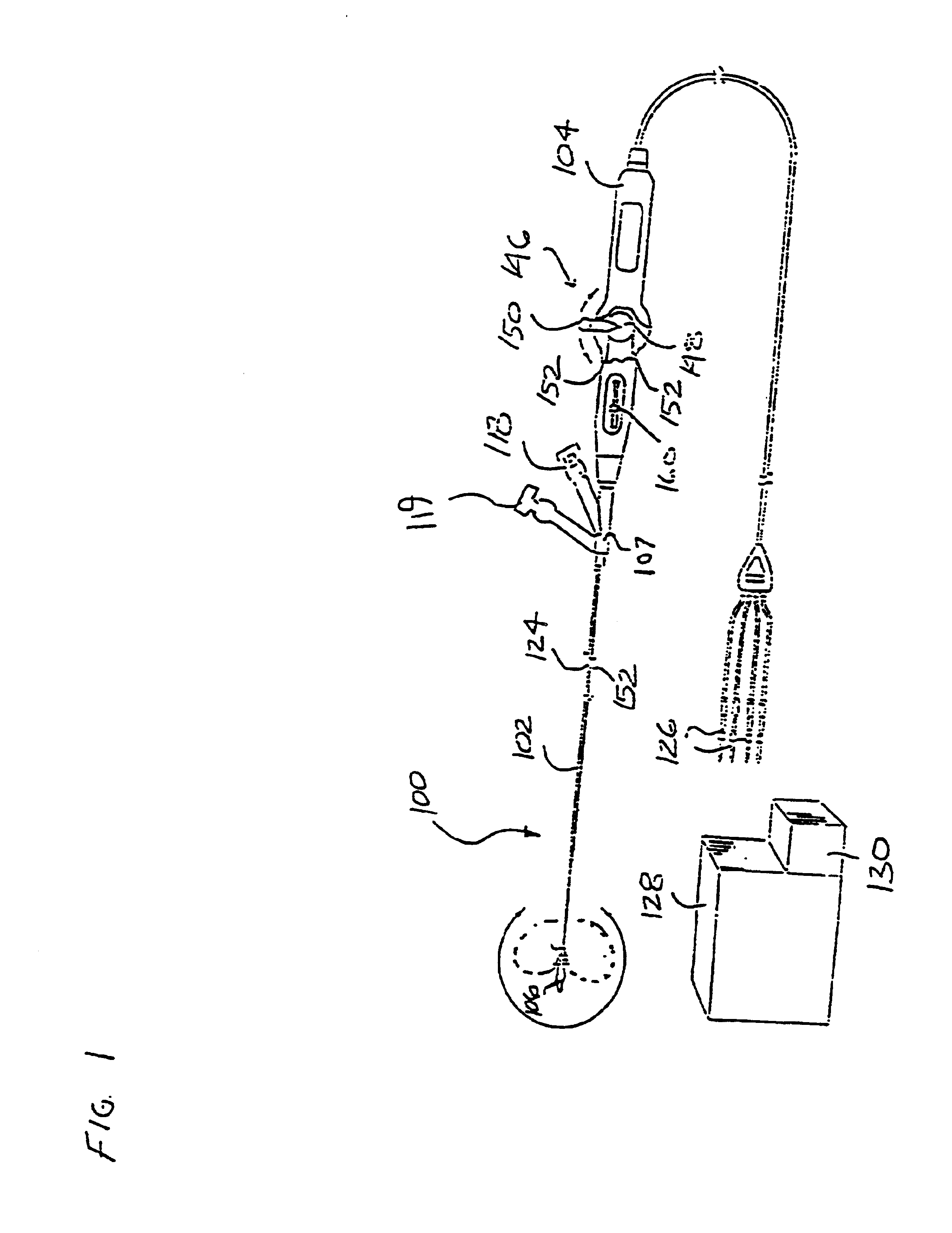Devices and methods for creating lesions in endocardial and surrounding tissue to isolate focal arrhythmia substrates
a technology of endocardial and surrounding tissue, which is applied in the field of catheters, can solve the problems of disrupting the normal path of depolarization events, disrupting the normal activation of the atria or ventricles, and disrupting the normal contraction of the heart tissue,
- Summary
- Abstract
- Description
- Claims
- Application Information
AI Technical Summary
Benefits of technology
Problems solved by technology
Method used
Image
Examples
Embodiment Construction
[0132]Referring to FIGS. 1-3, a first preferred embodiment of a tissue ablation catheter assembly 100 includes a flexible catheter tube 102 made of a polymeric, electrically nonconductive material, like polyethylene, polyurethane, or PEBAX® (i.e., polyether block amide). The catheter tube 102 has an open proximal end that is connected to a handle 104, and a distal end that is connected to a first preferred electrode carrying structure 106 configured to deliver ablation energy to the interior of the pulmonary veins of a patient, as is described in greater detail herein. The distal extremity of the catheter tube 102 is open and includes a closed distal tip 156 that is suitably bonded thereto.
[0133]As best seen in FIGS. 2 and 3, the electrode carrying structure 106 includes an expandable-collapsible electrode body 108 formed by a “balloon-like” wall suitably bonded to and disposed about the closed distal end of the catheter tube 102. In particular, such an arrangement provides axial su...
PUM
 Login to View More
Login to View More Abstract
Description
Claims
Application Information
 Login to View More
Login to View More - R&D
- Intellectual Property
- Life Sciences
- Materials
- Tech Scout
- Unparalleled Data Quality
- Higher Quality Content
- 60% Fewer Hallucinations
Browse by: Latest US Patents, China's latest patents, Technical Efficacy Thesaurus, Application Domain, Technology Topic, Popular Technical Reports.
© 2025 PatSnap. All rights reserved.Legal|Privacy policy|Modern Slavery Act Transparency Statement|Sitemap|About US| Contact US: help@patsnap.com



